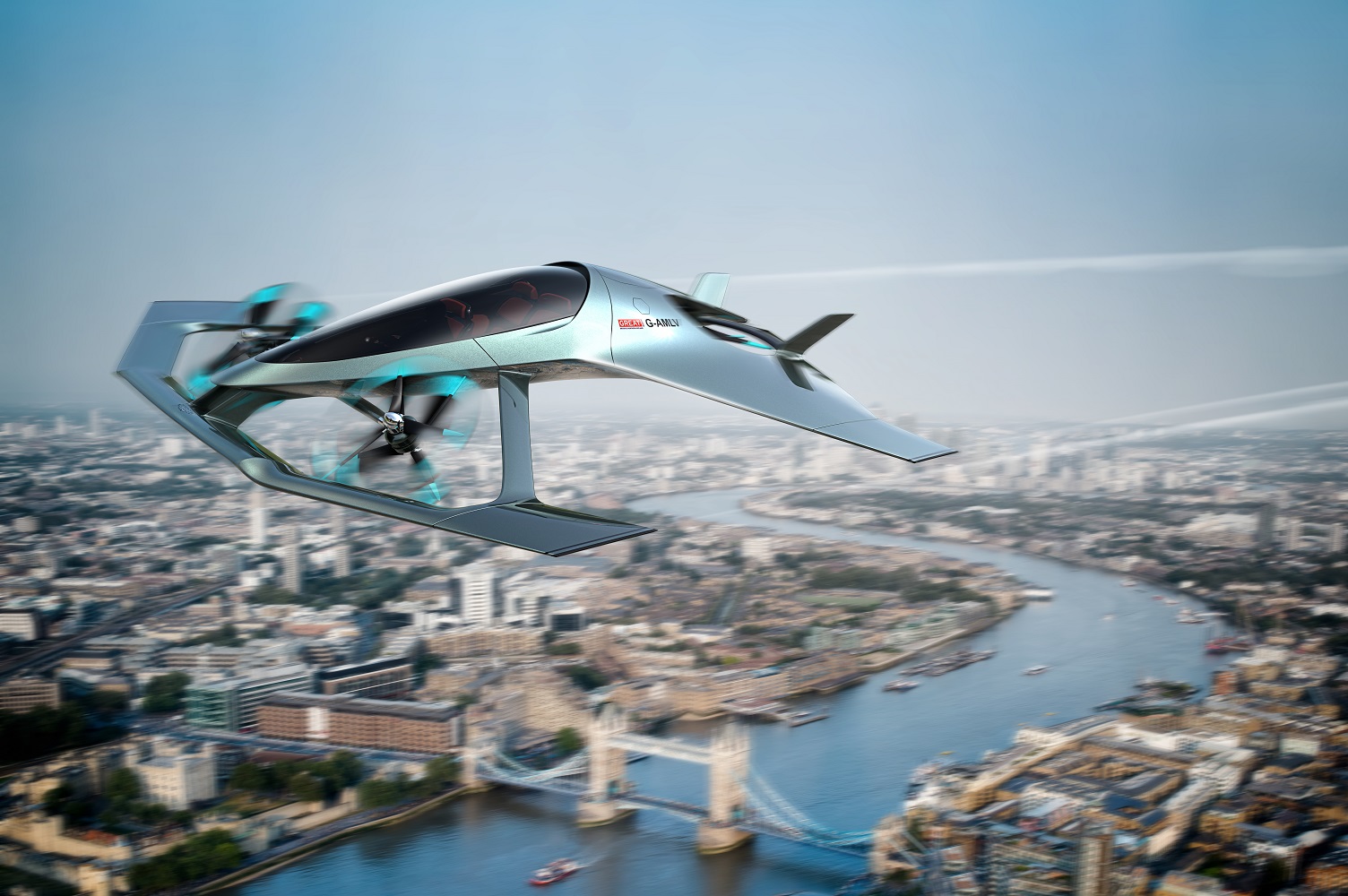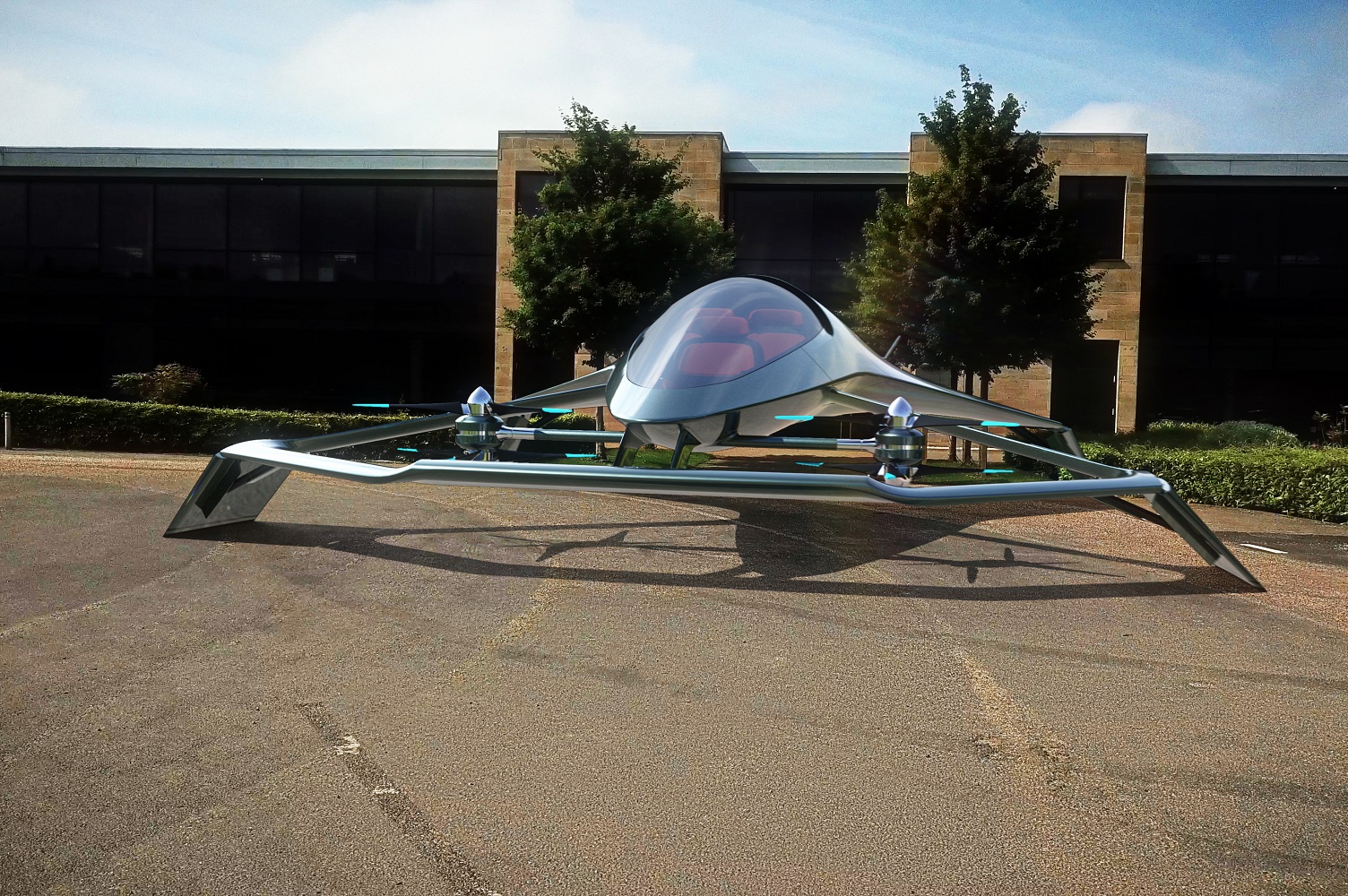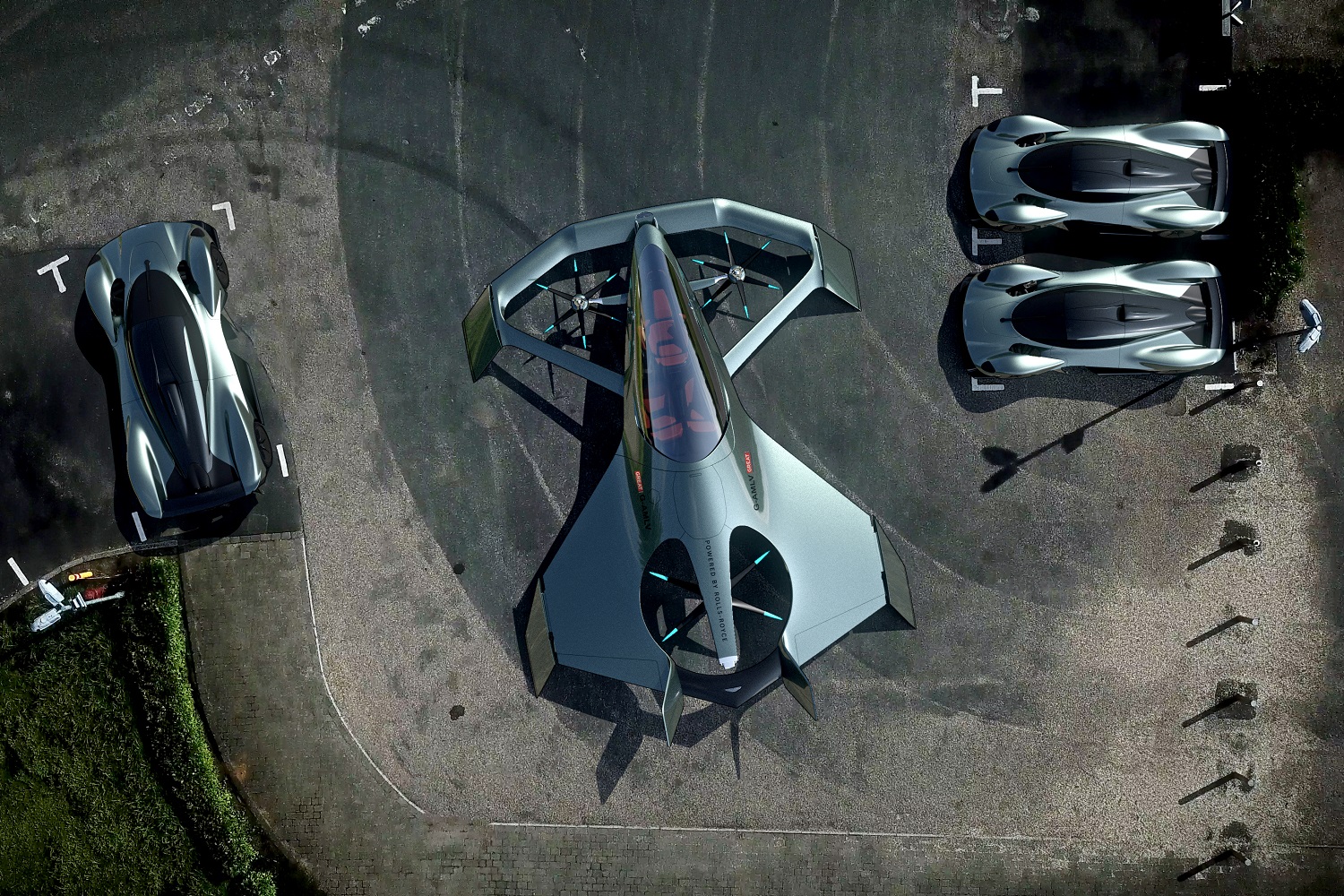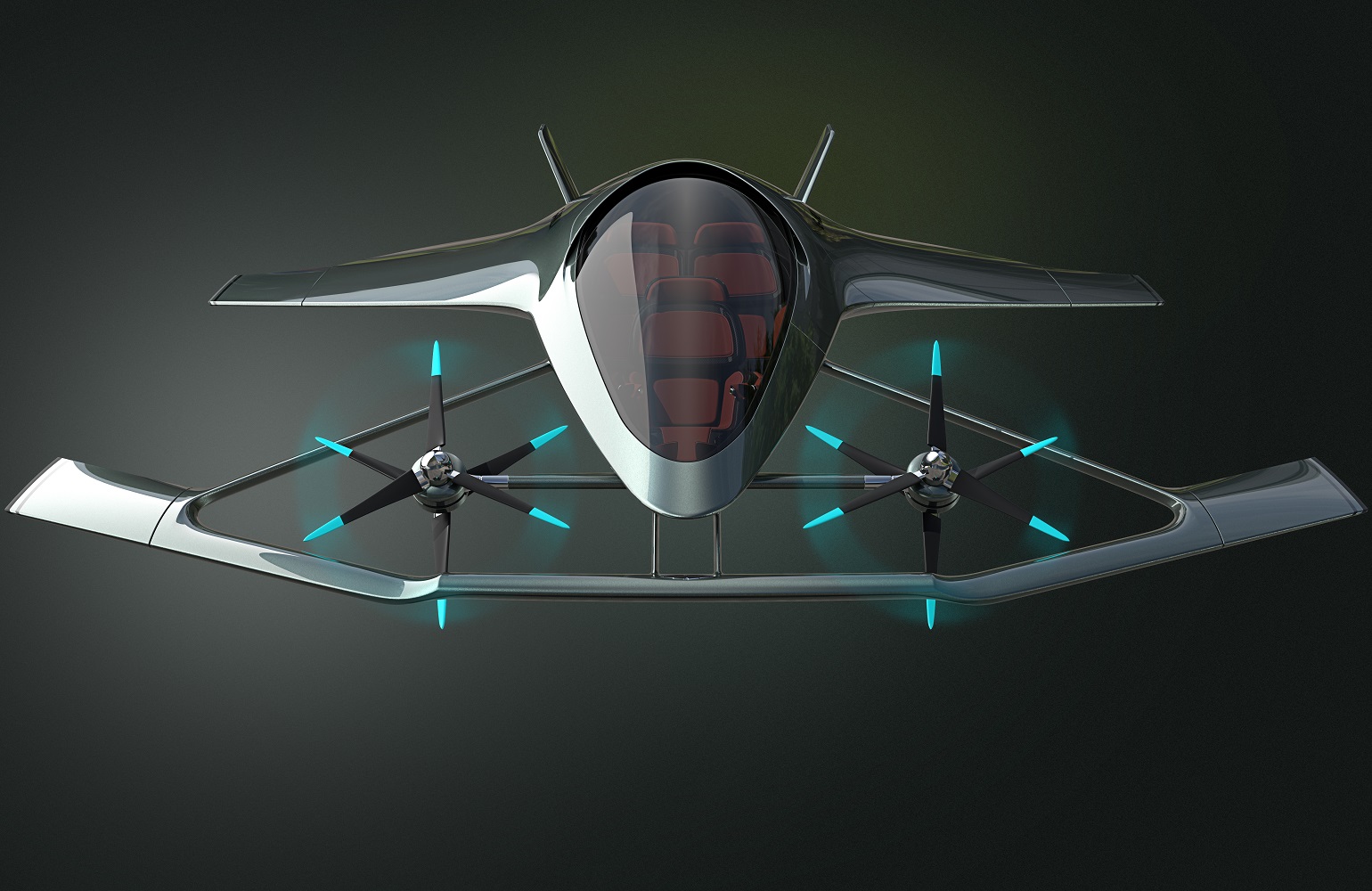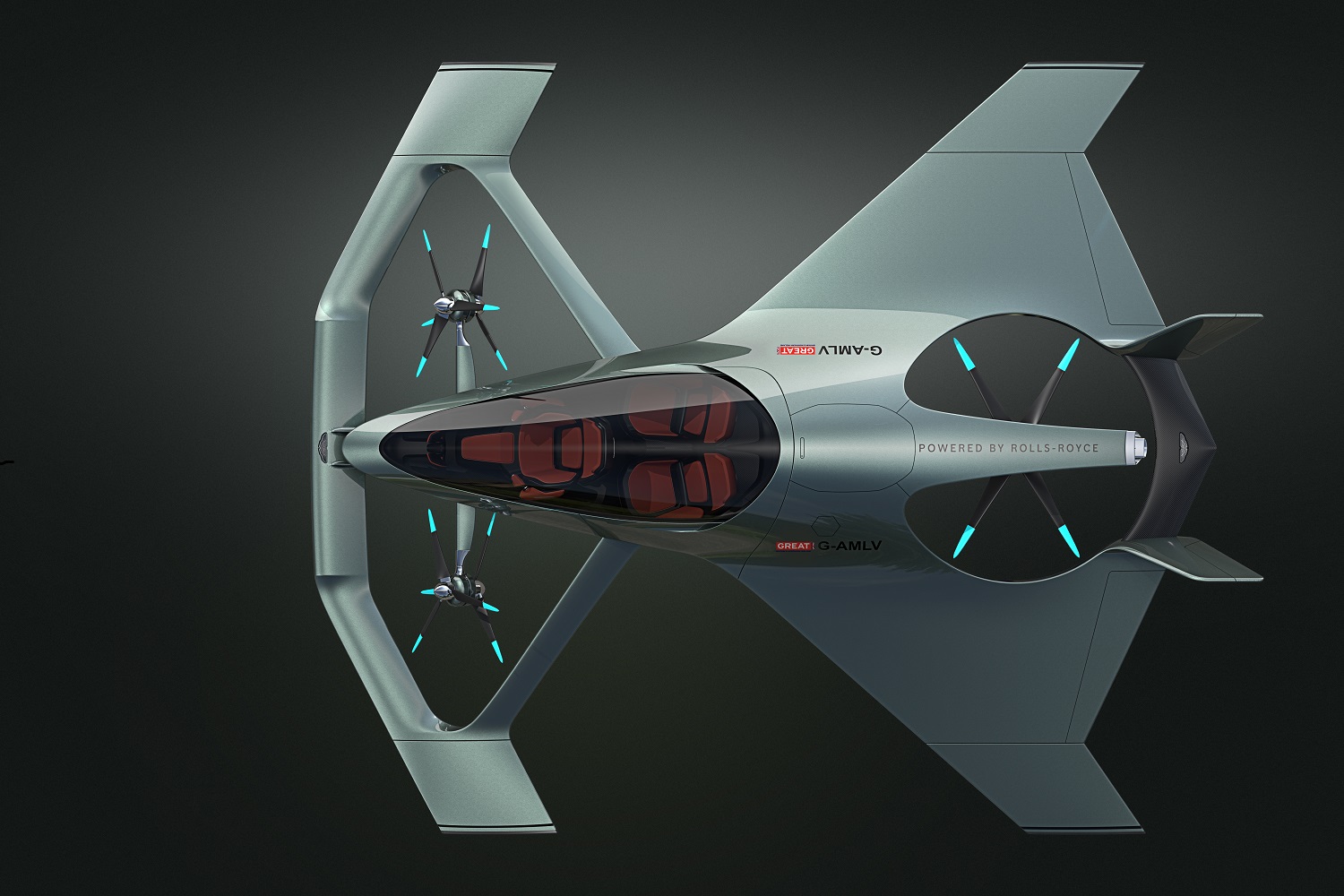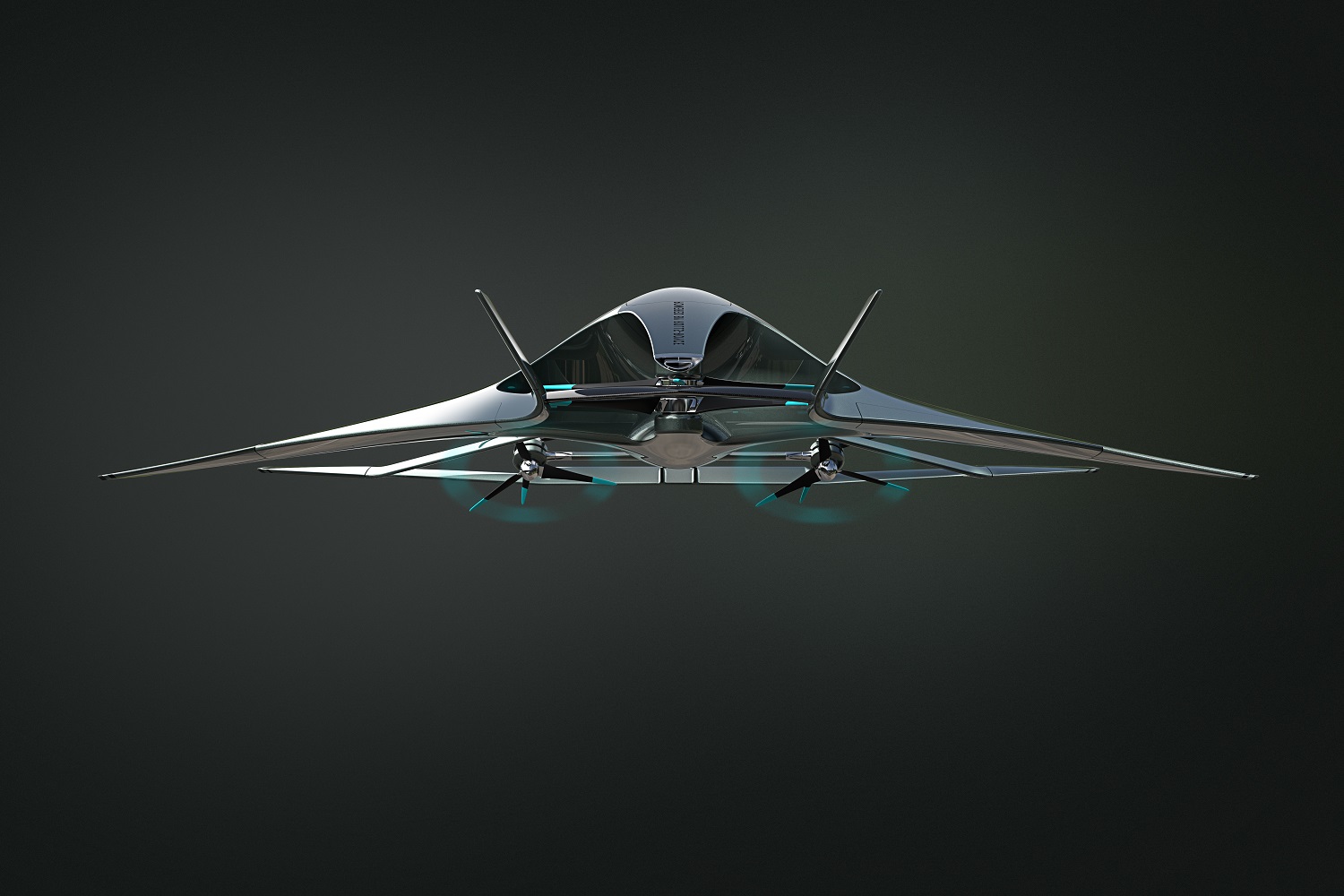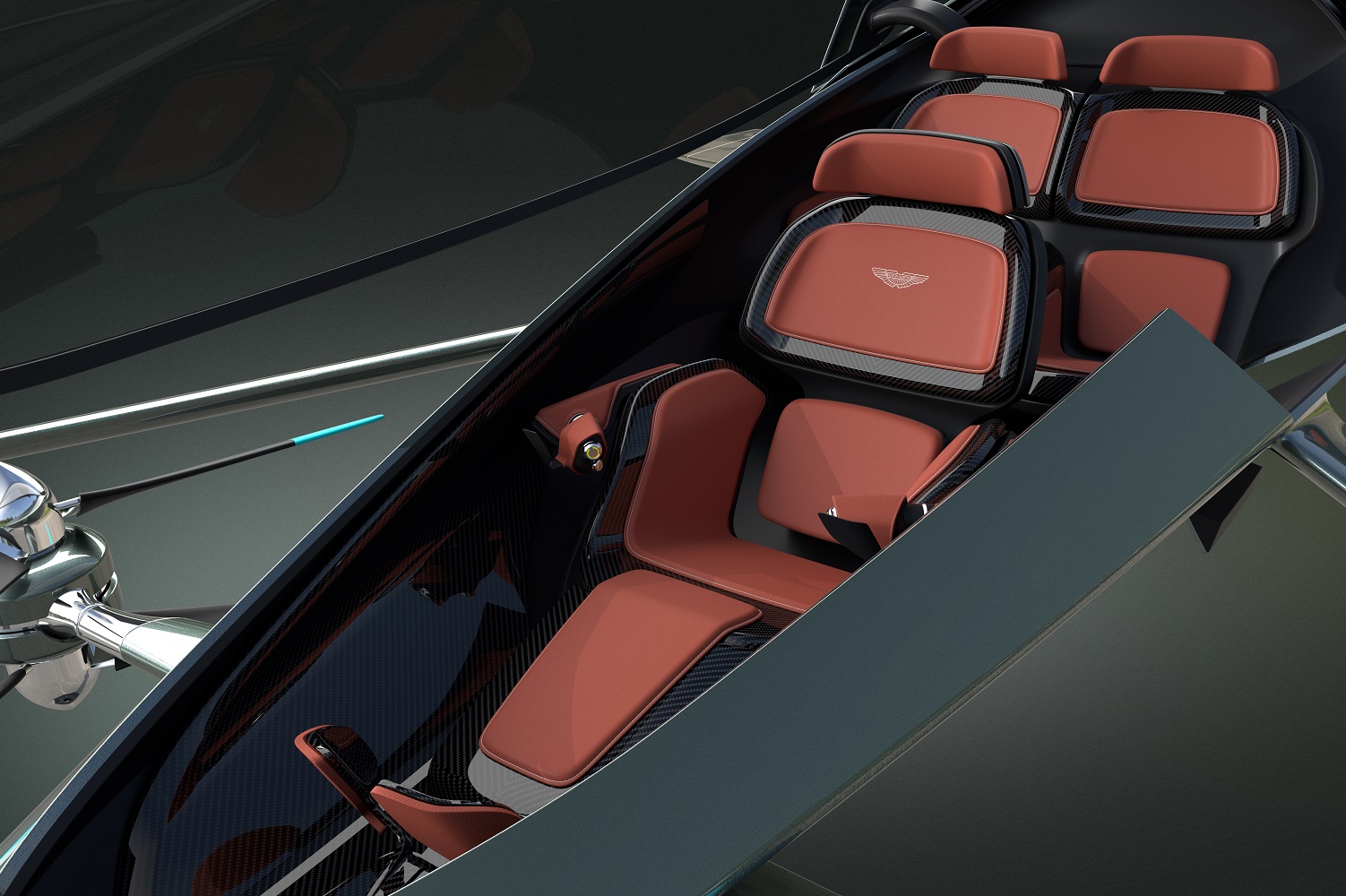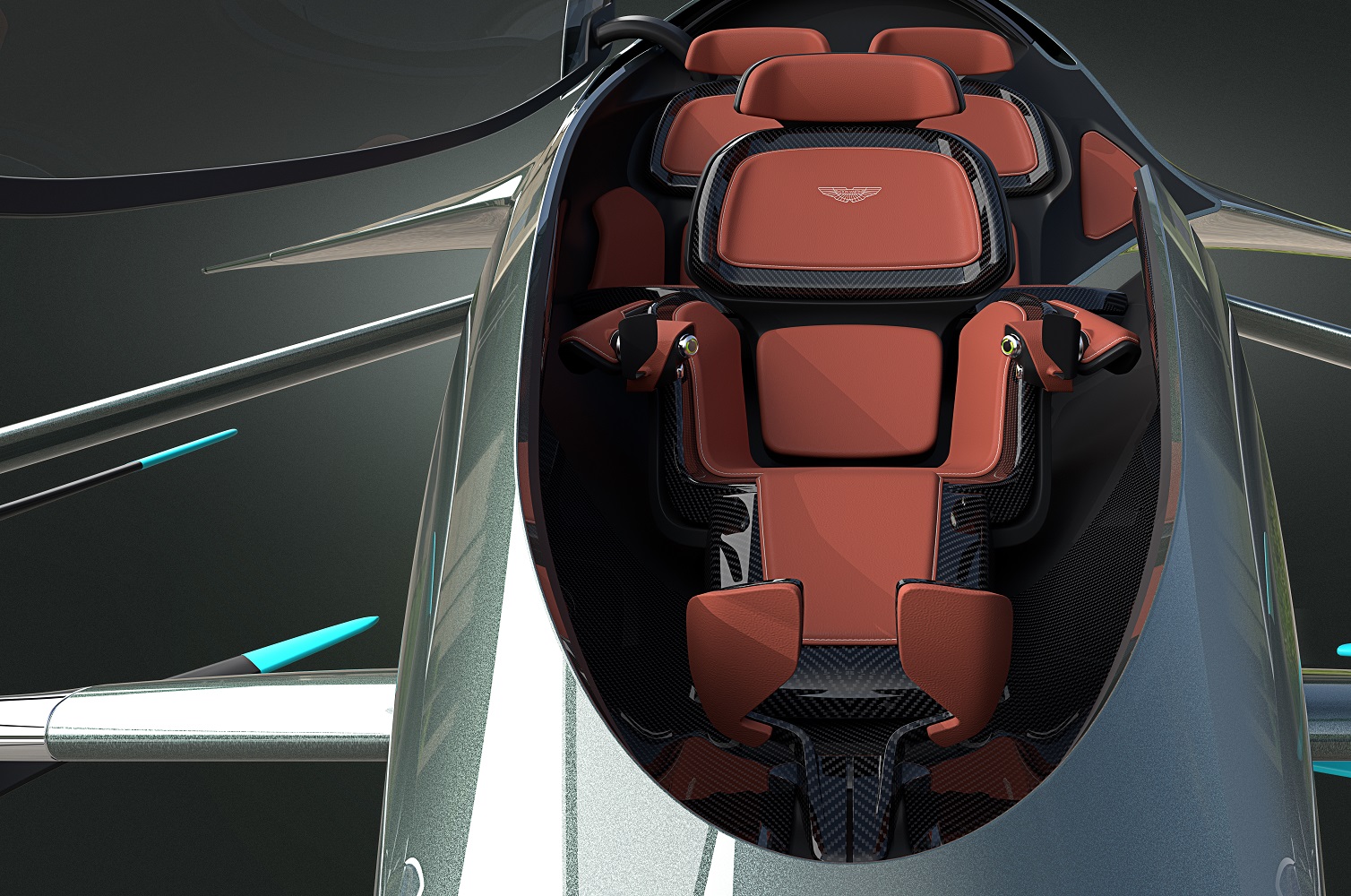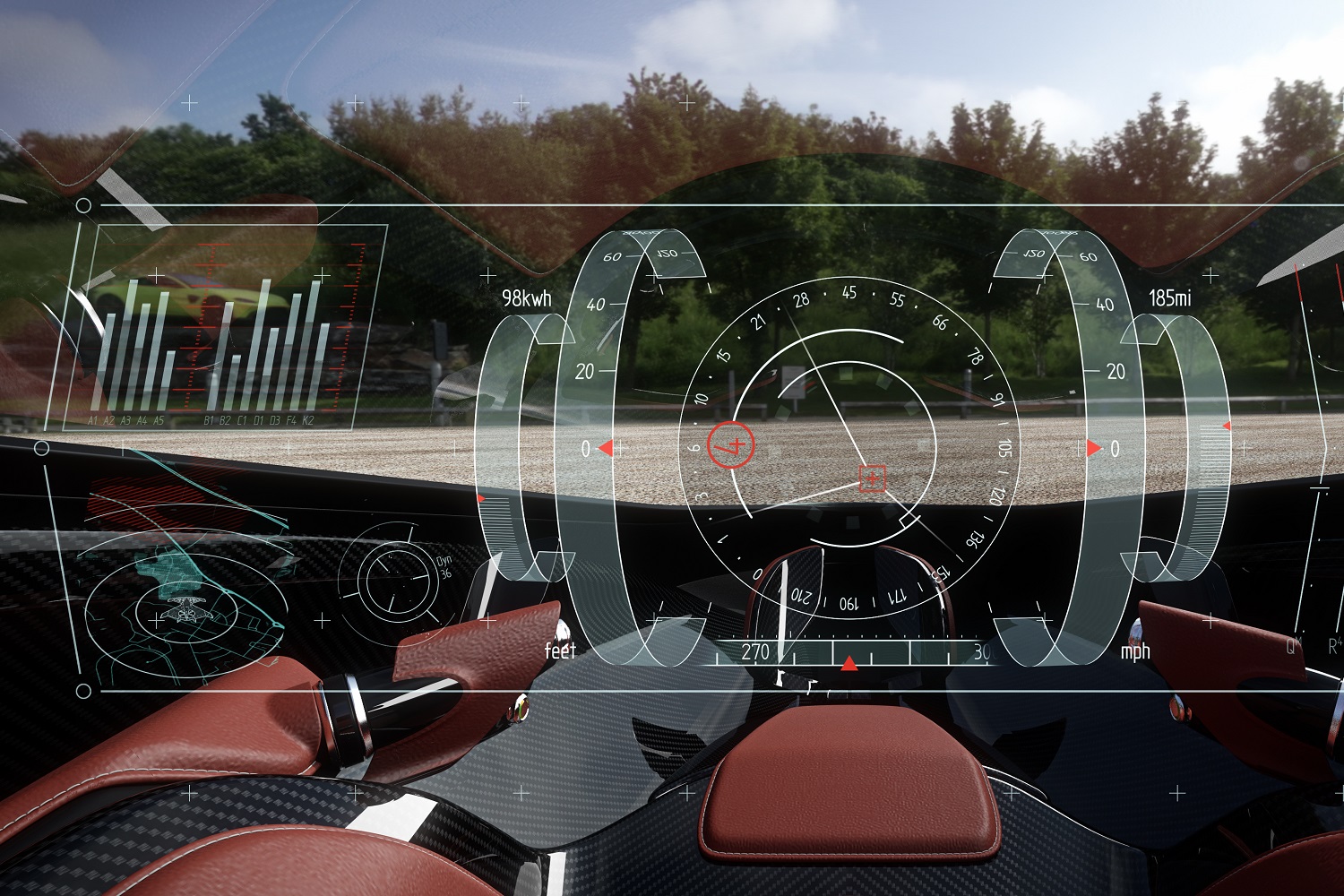Aston Martin has joined the race to put flying taxis in the skies above the world’s most crowded cities. The British company introduced a futuristic design study named Volante Vision at the biennial Farnborough Airshow that illustrates what the vehicle might look like when it embarks on its maiden voyage.
The announcement describes the Volante Vision concept as a hybrid-electric aircraft with vertical take-off and landing capabilities. Think of it as a giant drone developed to carry passengers. It offers space for three adults arranged in a triangular configuration; one passenger sits front and center while two more travel side-by-side directly behind the front seat. Rolls-Royce — the plane maker, not the car maker — provides at least part of the propulsion system but Aston Martin stopped short of providing concrete technical details. We don’t know exactly what it’s powered by or how far it can travel and at what speed. The company notes its concept can fly itself thanks to state-of-the-art autonomous technology.
Like Aston’s land-bound vehicles, the Volante Vision concept puts a strong focus on style and luxury. Design boss Marek Reichman points out his team drew inspiration from cars like the DB11, the Vantage, and the upcoming Valkyrie when drawing the Volante Vision.
The company added a wide, high-resolution head-up display that looks like it comes from a fighter jet to replace the instrument cluster. It provides passengers with key data about the Vision Volante and its surroundings like its speed, its range, and its altitude. Bringing it to production would be reasonably straight-forward because it’s based on an existing technology quickly spreading across the automotive industry.
Though it looks like a prop made for the next installment of Star Wars, Aston Martin suggests wealthy travelers will be able to commute in the Vision Volante in the near future.
“The Volante Vision concept will enable us to travel further with our hourly commute, meaning we are able to live further away from where we work. Cities will grow, and towns that are today too far away from cities to be commutable will become suburban,” Aston Martin CEO Andy Palmer noted in a statement.
Rivals working on similar projects, like Uber and Airbus, tentatively plan to start producing their own flying taxis between 2020 and 2030. Though Aston hasn’t released its time frame yet, that is the rule it will need to play by if it wants to remain competitive in this burgeoning segment of the luxury market.
